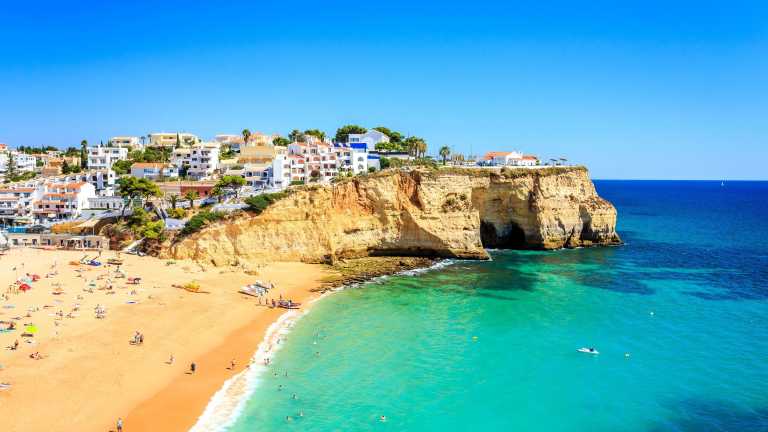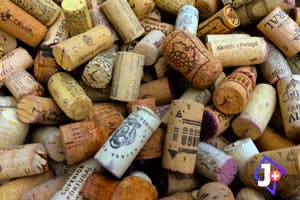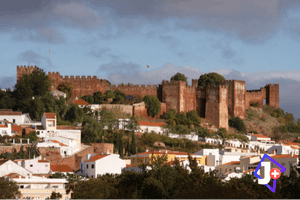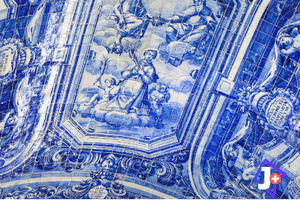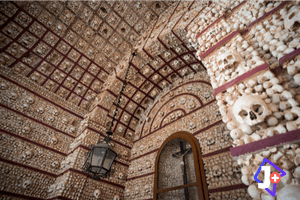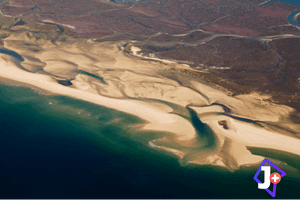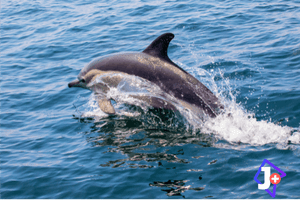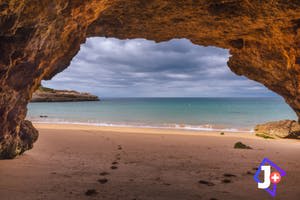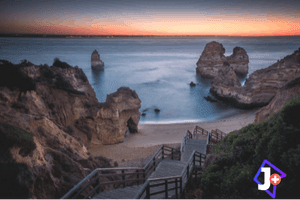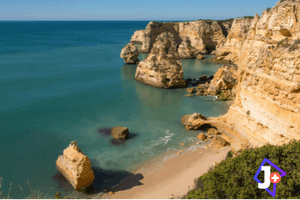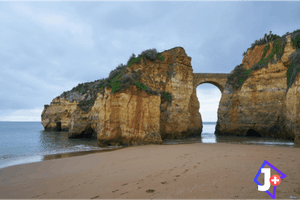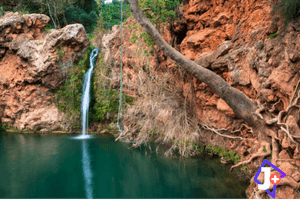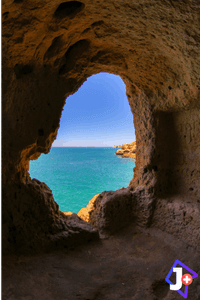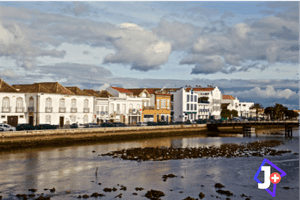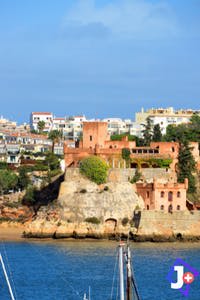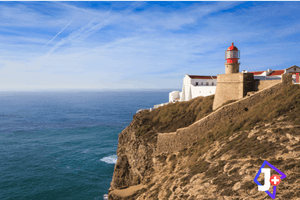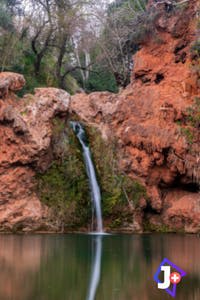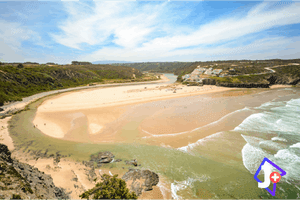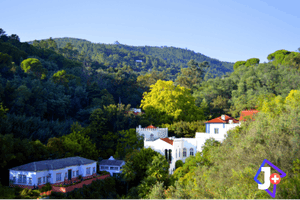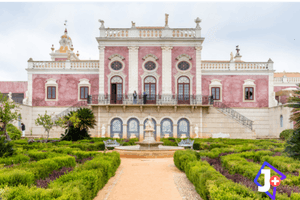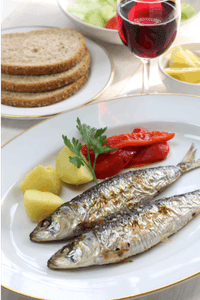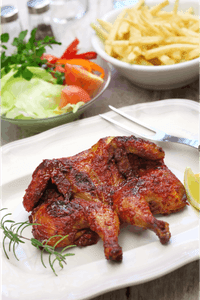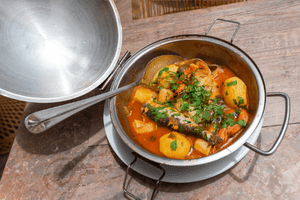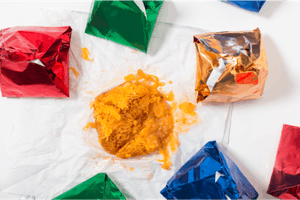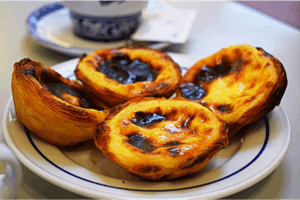7-day itinerary: first time to the Algarve?
Here’s where you should go:
Day 1
Ferragudo
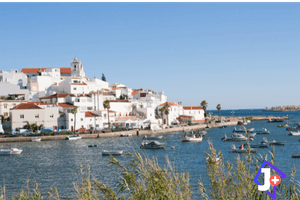
On the day you arrive, go straight to Ferragudo, which is west of Faro Airport, and walk around the town. Ferragudo is a whitewashed fishing town located near the mouth of the Arade River.
You will see men grilling fish outside while little fishing boats wobble in the river.
You'll pass various seafood restaurants and snack bars as you wander through the town's winding and picturesque streets. A Ria or Borda Do Cais are good places to go for seafood. Sen Tonkin is an excellent non-Portuguese choice.
Afterward, you can stroll to Praia da Angrinha and Fort of São João do Arade after seeing the town.
Day 2
Ferragudo to Carvoeiro
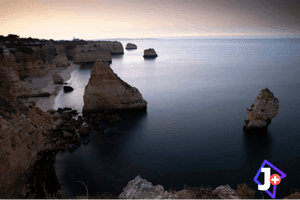
The Trail of Headlands connects Ferragudo and Carvoeiro (6km one-way; 2 hours one-way). This almost-secret coastal route connects Praia dos Caneiros with Carvoeiro, a lovely seaside resort town. This is a beautiful walking track that is relatively unknown, so it is gloriously calm.
Get a head start if you're doing this in the summer. If you leave after 8:30 a.m., you'll get burnt in the noon heat. Because the weather is pleasant in the spring and fall, you can go whenever you like.
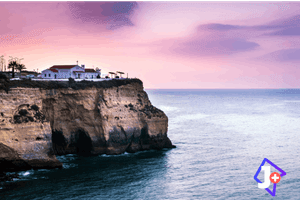
Enjoy the beautiful beach at Carvoeiro, and if you get hungry, get a bite to eat in town. Earth Café is a great place to go for a healthy and satisfying meal. Simply go back the same way you arrived. Take a taxi if it's too hot or you're tired.
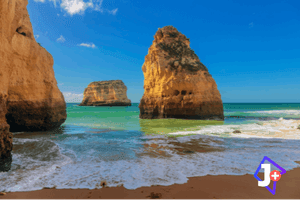
It's time to unwind at Praia dos Caneiros after a day in the sun. You may watch the sunset while sipping a drink at the beach restaurant Rei das Praias. We recommend sticking here for dinner if the price tag does not deter you. Reservation is recommended.
Day 3
Algarve Beaches
The third day of your Algarve trip brings you to some of the most gorgeous beaches in the country. Spend the day bouncing between the beaches of the Algarve.
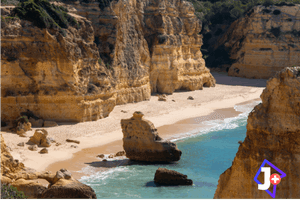
Our favorite swimming spot along the southern Algarve coast is Praia da Marinha. The golden limestone cliffs provide protection, and the water is perfect. The beach is a short downhill walk from the parking lot. A modest café is also present on the beach.
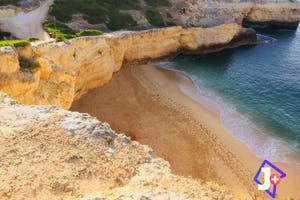
The renowned Seven Hanging Valleys Trail (5.7 km one-way; 2 – 2.5 hours one-way) begins at Praia da Marinha. You might hike the coastal route to Praia de Benagil and to Praia de Vale Centianes.
Consider hiring a SUP or kayak at Benagil Beach if seeing Benagil Cave is on your bucket list. The cave is only accessible from the sea.
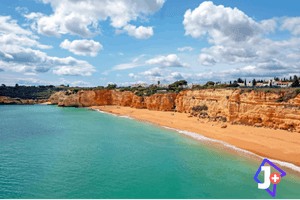
Praia Nova is a very beautiful beach in the Algarve, with a view of the white-washed chapel of Igreja de Nossa Senhora da Rocha. You'll be overjoyed when you arrive if you enjoy collecting seashells.
You can enjoy the sunset, then dinner, at Armação de Pêra. It is a former fishing community that has been transformed into a tourist destination. The origin of the town's name is a reference to Pera fishermen who caught fish with tuna nets (armação).
When you arrive, go straight to the "Fisherman's Beach," which has a collection of modest huts where local fishermen relax and stow their gear. Fishnets and boats litter the shore, providing a realistic sight of the region's oldest profession.
Visit one of the seafood eateries located along the shore to sample the fresh catch. At Restaurante Bùzio, now known as Só Verão, freshly-made Arroz de Marisco is served. Arte Náutica is another beachside seafood restaurant. It receives excellent ratings, despite its high cost.
Day 4
Lagos
Lagos is a historic maritime city with a history dating back over 2000 years. It was held by the Phoenicians, Romans, Visigoths, Byzantines, and Moors, who fortified and walled the city in the 8th century and constructed a medieval fortress that can still be seen today.
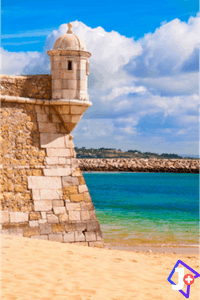
Explore the charming and historically significant Lagos Old Town, including the Mercado de Escravos, Europe's first slave market, the Baroque church of Saint Anthony, the charming Forte da Bandeira, Lagos's Castle, and the ruins of the ancient city walls.
If you're looking for a change from traditional Portuguese cuisine, Lagos has you covered with Mexican, Indian, Hawaiian, and Chinese cuisine.
The beautiful beaches of Camilo and Dona Ana are easily accessible from the heart of Lagos.
It's possible to walk from Lagos to Praia da Dona Ana and Praia do Camilo when the weather is nice. The walk does not follow the shore the entire way, unlike the other coastal trails described in this itinerary. Because part of the coast is fenced off, you may have to walk on the sidewalks near the road.
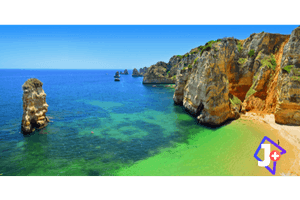
Praia Dona Ana is regarded as one of the world's most beautiful beaches. Stay on Dona Ana and then go to the stunning Praia do Camilo. Walking distance from each other, or you can also take your car, which will take you 5 minutes.
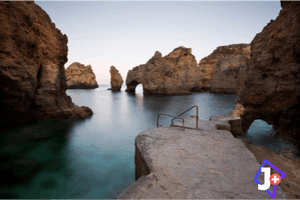
Another award-winning beach, Ponta da Piedade, is a strip of shoreline located 2 kilometers from Lagos' city center. Natural factors shaped the coastal scenery of caverns, grottoes, and arches over thousands of years. Ponta da Piedade will take your breath away.
The beach is less than a 5-minute drive from Praia do Camilo, then on foot, you take a cliff-top route.
You can see everything of Ponta da Piedade's splendor from the 20m-high cliffs, but you should go down the 182 steps to come closer to the sea.
You won't be able to swim in Ponta da Piedade during the busy season, but you may take a boat tour to adjacent beaches and grottoes.
Day 5
Western Algarve
The Algarve (along with Alentejo) is home to the wild, windswept coast of Vicentina, which is known for its reddish limestone sea cliffs. You may go directly from Lagos to Costa Vicentina via Aljezur, which is a 40-minute drive.
Alternatively, you might take a diversion to Burgau and Sagres before continuing on to the western coast, which will take around 1.5 hours.
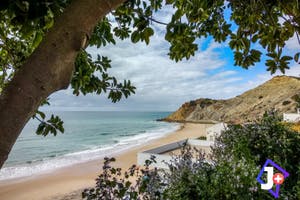
Burgau, west of Lagos, is a picturesque coastal village. Here, you can swim or have a cup of coffee.
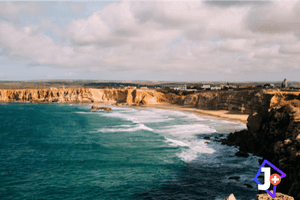
Then, travel to Sagres, a small, remote, and extremely modest village recognized as the Algarve's surf paradise.
Visit Sagres Fortress, view the fishing harbor, eat lunch in the center (try the Piri-Piri chicken or Babugem), go for a walk along the coast, learn surfing, or drive up to the Praia Da Bordeira or Praia do Amado via the uninhabited Vicentine Coast Natural Park. Cabo de São Vincente, Europe's most southwestern tip, is about 5 kilometers from Sagres.
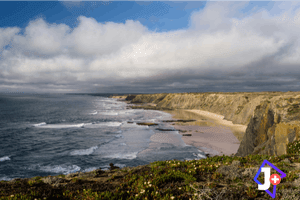
Costa Vicentina is the Algarve's best-kept secret. Costa Vicentina is a dramatic and wild region that is sometimes ignored. Consider hiking the Rota Vicentina Fisherman's Trail, it is without a doubt one of Europe's greatest hiking trails.
The beach at Praia da Arrifana is located within the Vicentine Coast Natural Park, which is a natural wonderland. The beach of Praia da Arrifana has been awarded the blue flag.
Between Lagos and Albufeira, the coast is significantly different from the beach resorts, and you'll pass through little communities where historic agriculture and fishing practices are still practiced.
The Cape of Saint Vincent, often known as "the end of the world" by the Romans, is a significant Algarve location rich in history and legend.
On top of the 60-80 meter-tall cliffs, there is a fortress built in the 16th century to protect the coast from pirate attacks. There is also a beautiful lighthouse within the stronghold that is only open on Wednesdays.
Day 6
Historic Towns
Start with the history of the Algarve, which gets its name from the Arabic phrase 'Al-Gharb,' which means 'the west,' because it was formerly the westernmost outpost of the Moorish dominion.
Silves, one of Portugal's oldest cities and the historical capital of the Kingdom of the Algarve, is a charming walled town nestled among citrus orchards and vineyards in the Monchique Mountains.
Silves Fortress, a magnificent red-brick Moorish castle from which the Moors controlled the whole Algarve, is the highlight of the visit. The city walls and the Sé Cathedral, which was erected on the site of a large mosque, are well worth seeing.
Porches Potter is a 15-minute drive from Silves, where traditional Iberian patterns have been dusted off and revived by the skilled hands of two sisters.
Fresh salads are served on the pottery's own ceramics in the Bacchus Bar.
After leaving Silves and driving 30 minutes through the foothills of the Serra de Monchique, you'll arrive in Monchique, a town tucked away among pine, oak, and eucalyptus trees.
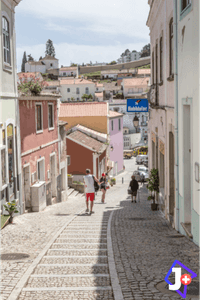
After spending some time visiting the tranquil village and its cobblestone alleyways, climb Mount Fóia, the Algarve's highest summit at 902 meters. It offers breathtaking panoramic views of the entire region as well as its rich vegetation.
Visiting Silves and Monchique allows you to appreciate the Algarvian countryside and witness a world separate from the Algarve's famed beach resorts.
Another option for day 6:
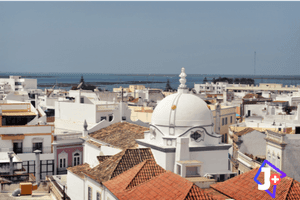
Olhão is a seaside town in the Algarve's eastern region.
Two markets (Mercados de Olhão) are located on the town's shoreline.
The first building offers vegetables, fruits, and spices, while the second holds Algarve's largest fish market.
As soon as you approach the fish market, you'll see a large selection of regional fish, such as black scabbardfish, monkfish (tamboril), bream (dourada), posta corvina, dried codfish (bacalhau), white seabream (sargo), sole (linguado), and turbot (pregado).
Tavira is a town in the state of Portugal, east of Olhão. The village, which spans the GilãoRiver, is a wonderful area to stroll, buy, and dine.
São Brás de Alportel is a small village in Algarve's Barrocal district. Tourism has little impact here, which is one of the reasons why we liked it.
Day 7
Albufeira
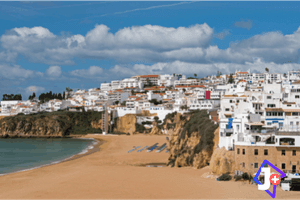
You'll spend the final day of your Algarve vacation at Albufeira.
It's a former fishing community that's grown into a popular vacation spot, complete with sandy beaches and a bustling nightlife district. Candy-colored apartments surround this coastal city.
The local fishermen now use the modern marina which also serves as a base for dolphin watching, diving, and boat rides.

If you have time before your flight, I recommend visiting Praia da Falésia, Albufeira's longest beach, which is lined with dark red and white sand cliffs capped with green trees.
Quad-biking is a great way to get a rush of excitement. It's a fantastic chance to experience the Algarve beyond the beaches.
After visiting the Algarve, you'll see why it's such a popular destination.
Of course, this is only a suggestion for a 7-day itinerary in the Algarve; you may tailor it to your own interests, budget, and schedule.
These instructions, I believe, will make planning and enjoying your vacation much simpler.
Have a great time in Portugal and be safe.

